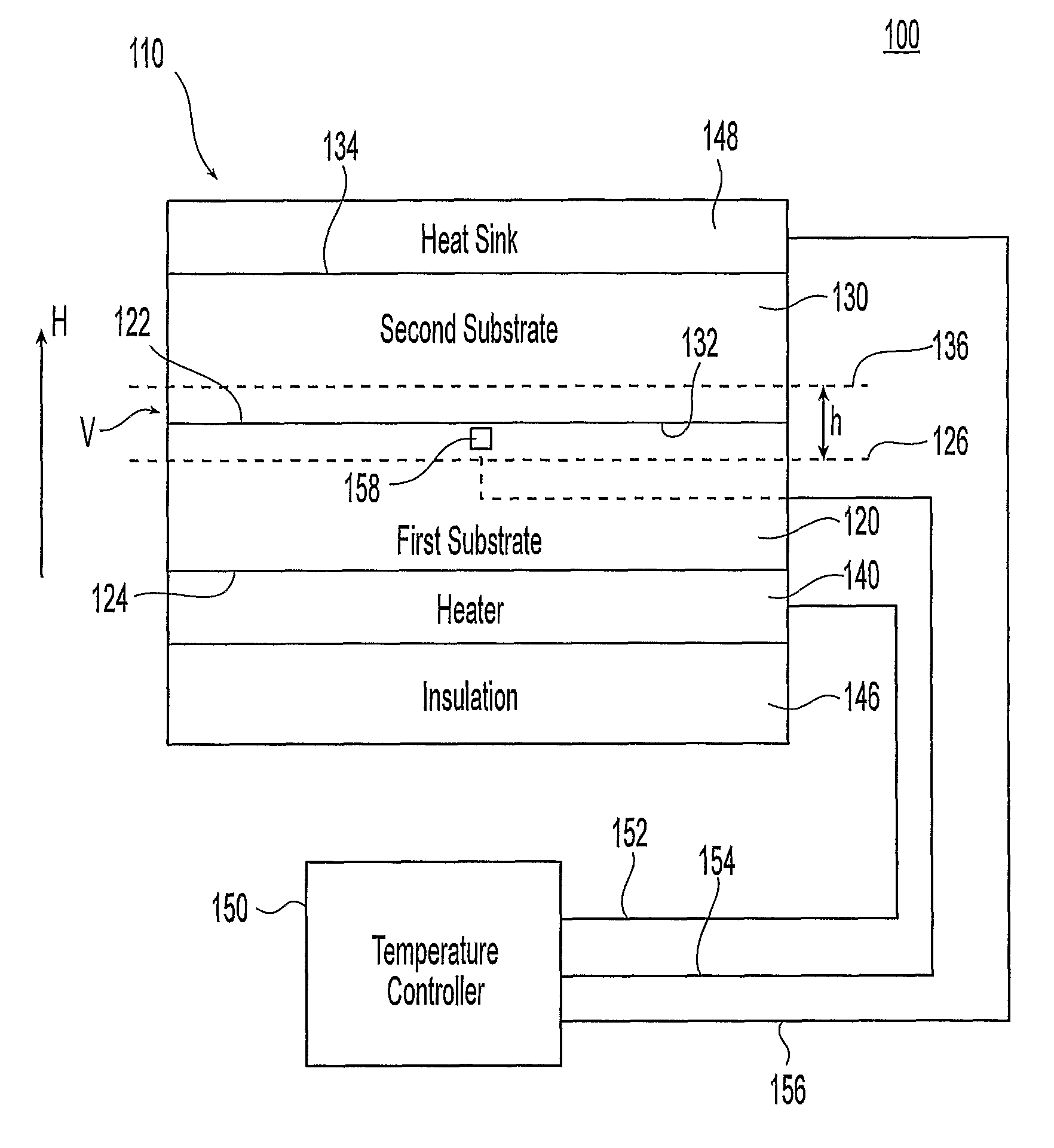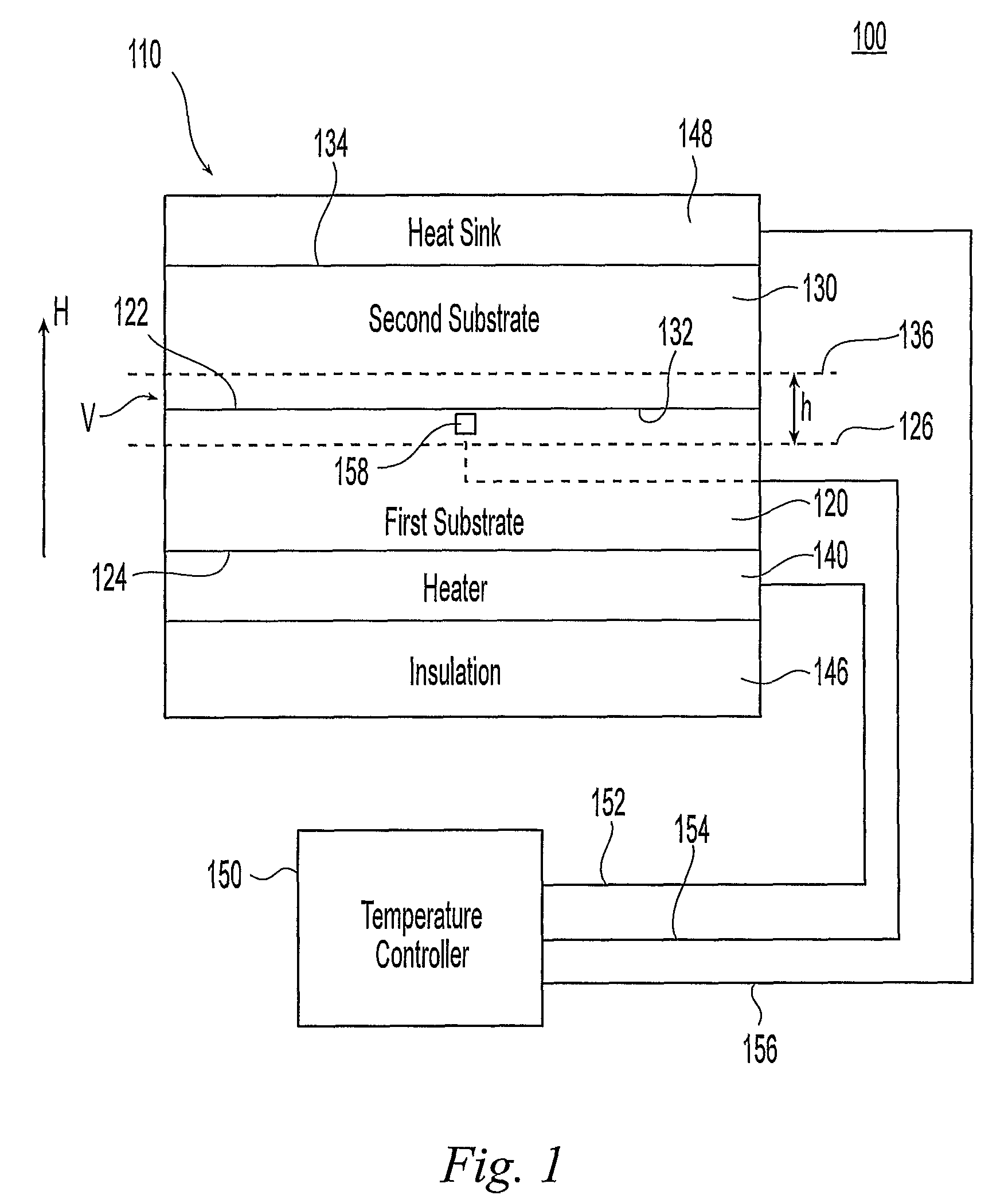Temperature controller for small fluid samples with different heat capacities
a temperature controller and fluid sample technology, applied in the field of temperature control devices, can solve the problems of inability to meet the requirements of rapid temperature changes, inability to provide rapid temperature changes, and inability to accurately and uniformly adjust the temperature of the temperature controller
- Summary
- Abstract
- Description
- Claims
- Application Information
AI Technical Summary
Benefits of technology
Problems solved by technology
Method used
Image
Examples
Embodiment Construction
[0035]FIG. 1 shows an embodiment of a system 100 in accordance with the present invention. The system includes a fluidic chip assembly 110 and a temperature controller 150. The fluidic chip assembly 110 includes a first substrate block 120 and a second substrate block 130. The first substrate block 120 has a first inner surface 122 and first outer surface 124, while the second substrate block 130 has a second inner surface 132 and second outer surface 134. The first and second substrate blocks 120, 130 are such that, in the assembled state and during use, the first inner surfaces 122, 132 oppose, or face, each other and, more preferably, abut one another. Also, the first and second substrate blocks 120, 130 are such that, in the assembled state and during use, the first and second outer surfaces 124, 134, preferably are planar and parallel to one another.
[0036]As is known to those skilled in the art, the first and second substrate blocks typically are separately formed, one or both ...
PUM
| Property | Measurement | Unit |
|---|---|---|
| temperature | aaaaa | aaaaa |
| temperature | aaaaa | aaaaa |
| temperature | aaaaa | aaaaa |
Abstract
Description
Claims
Application Information
 Login to View More
Login to View More - R&D
- Intellectual Property
- Life Sciences
- Materials
- Tech Scout
- Unparalleled Data Quality
- Higher Quality Content
- 60% Fewer Hallucinations
Browse by: Latest US Patents, China's latest patents, Technical Efficacy Thesaurus, Application Domain, Technology Topic, Popular Technical Reports.
© 2025 PatSnap. All rights reserved.Legal|Privacy policy|Modern Slavery Act Transparency Statement|Sitemap|About US| Contact US: help@patsnap.com



